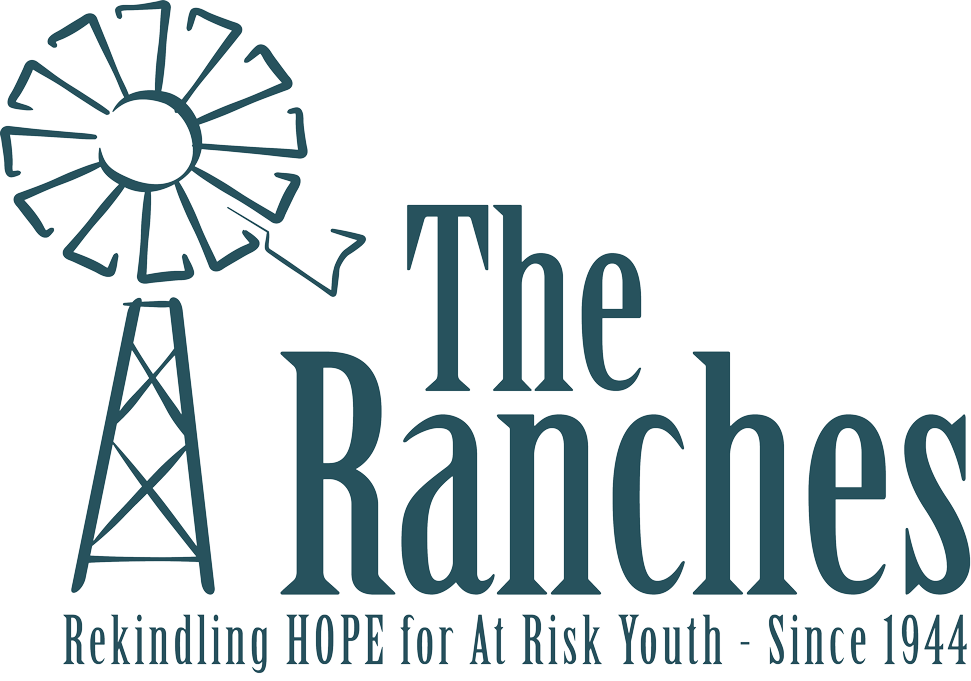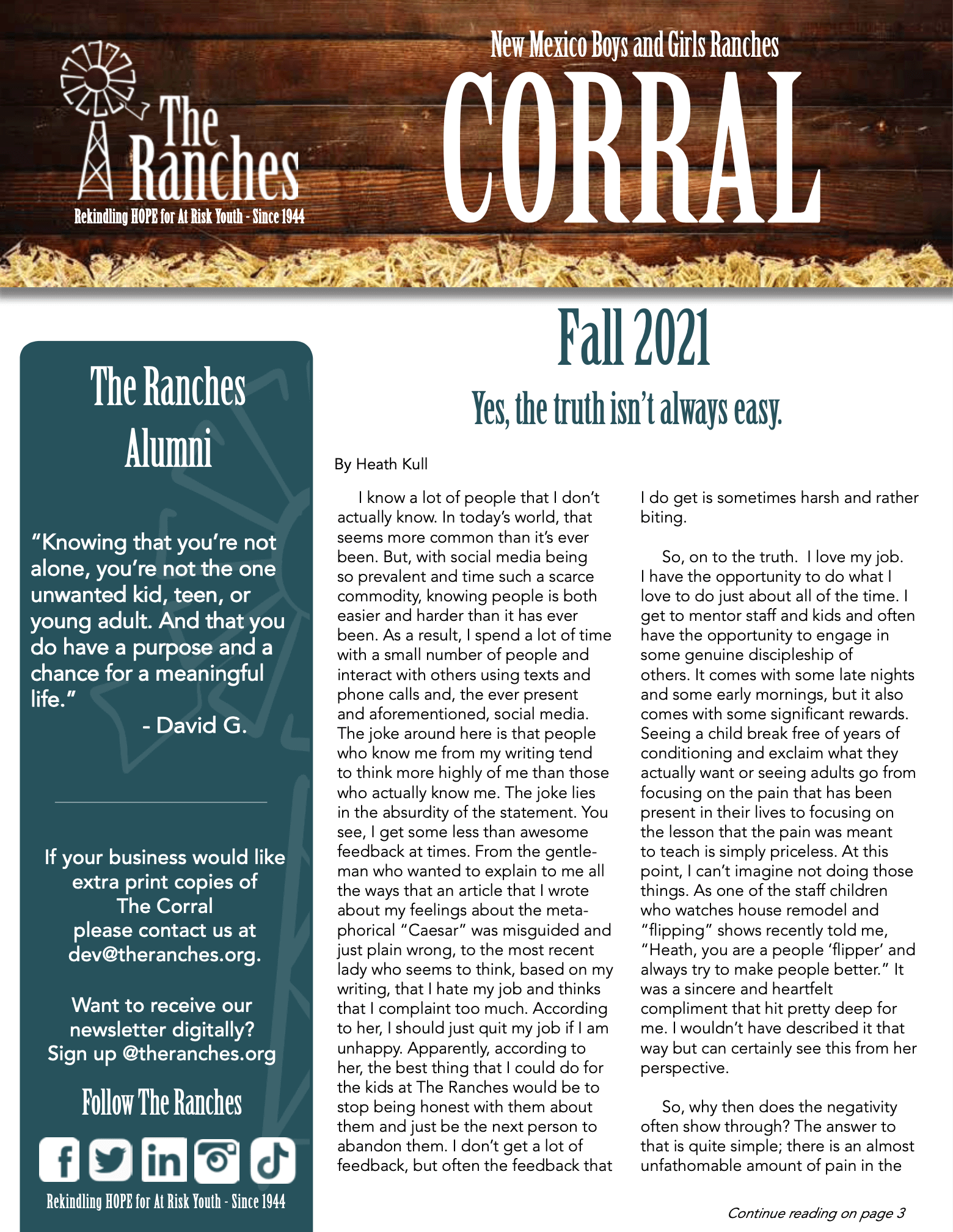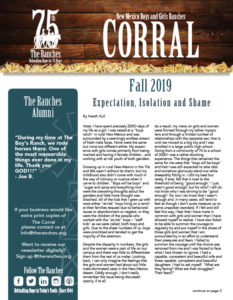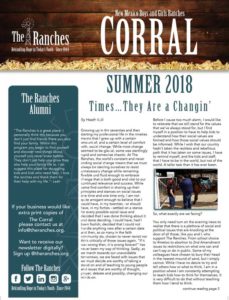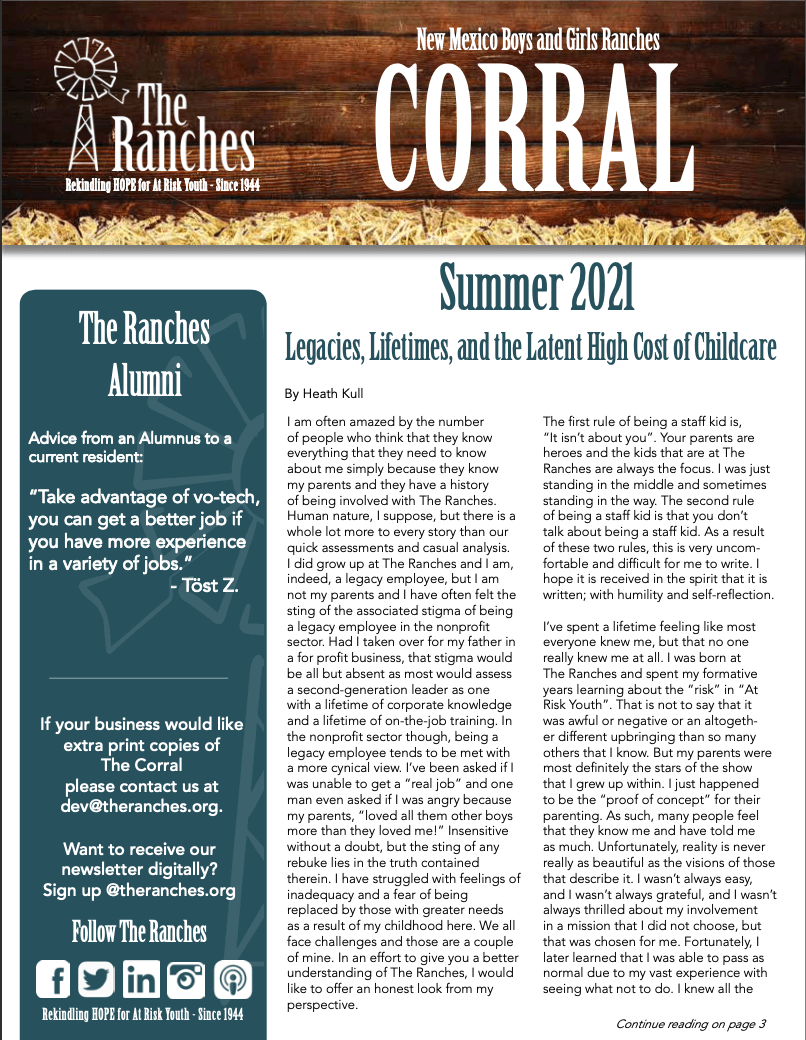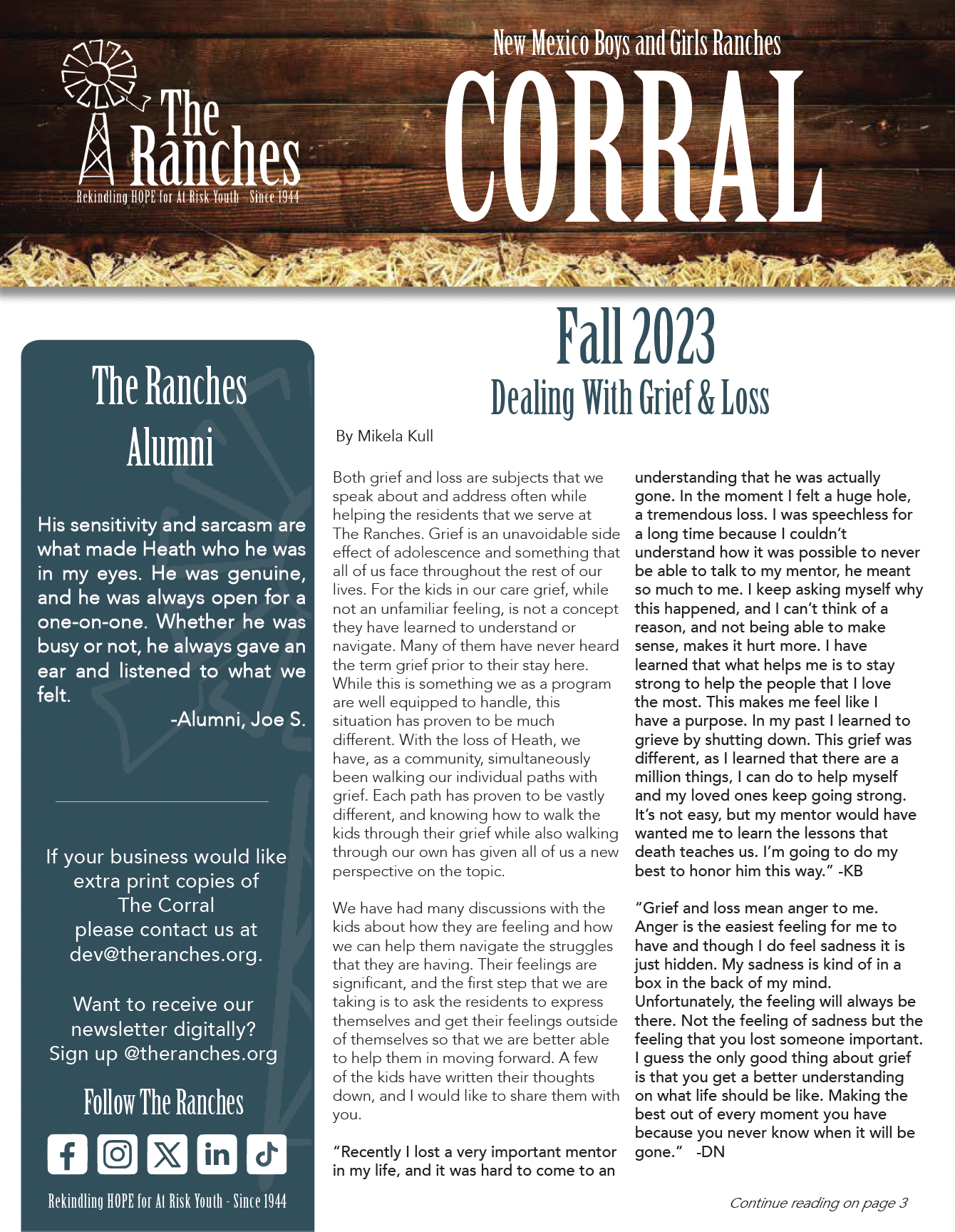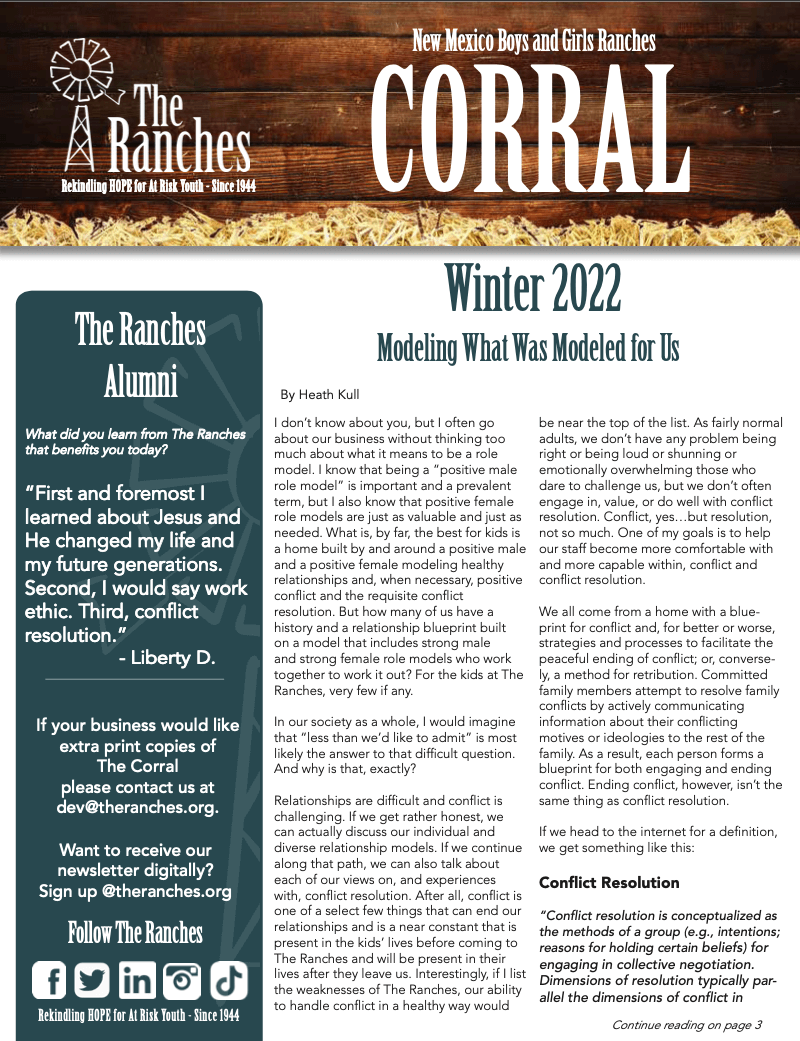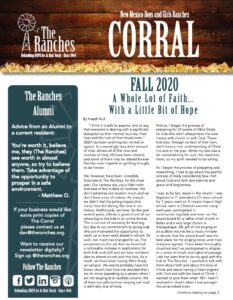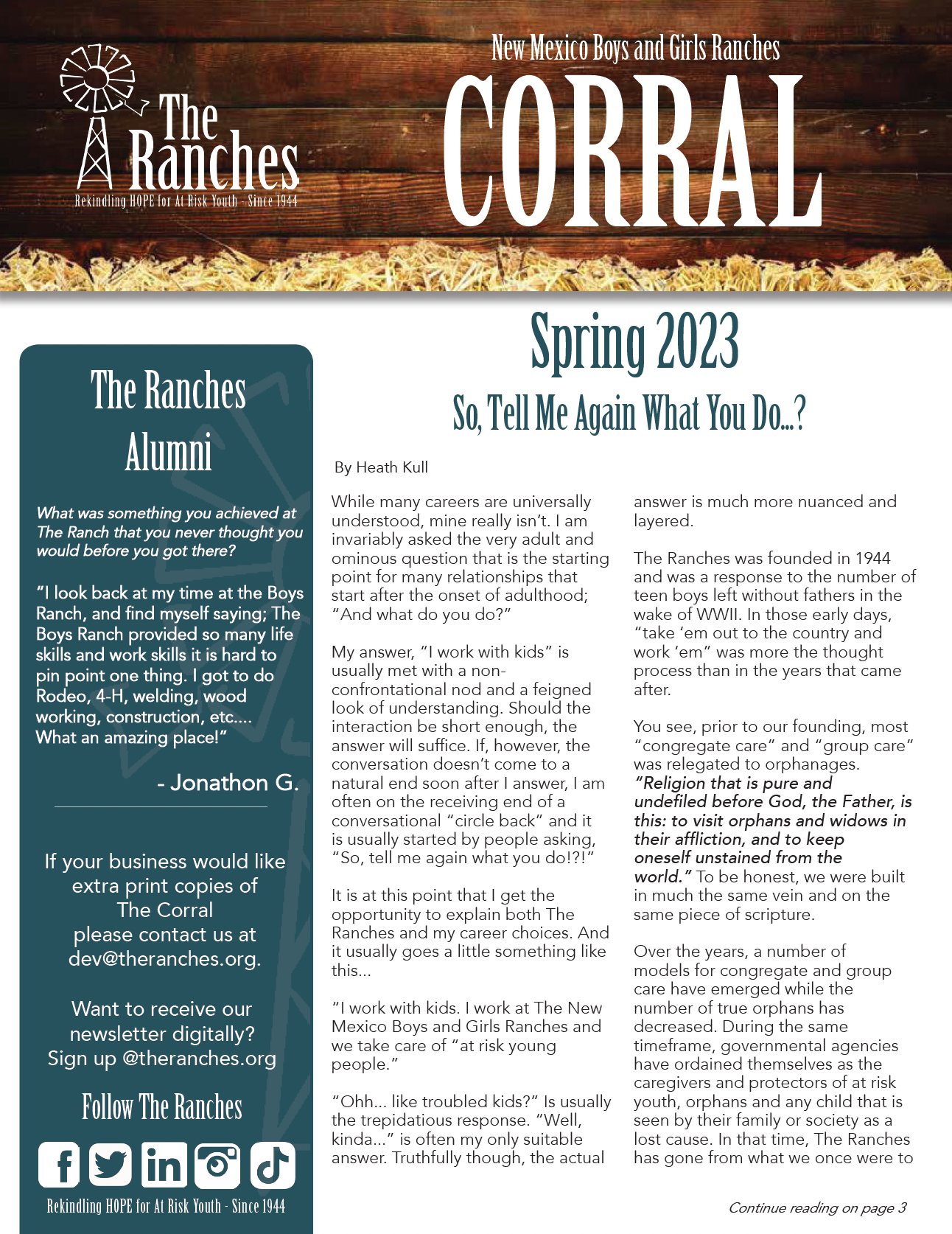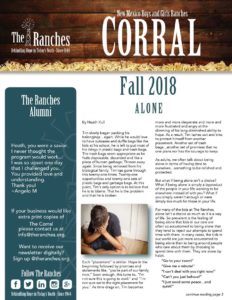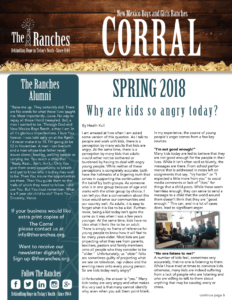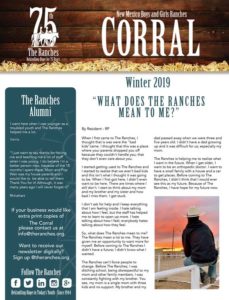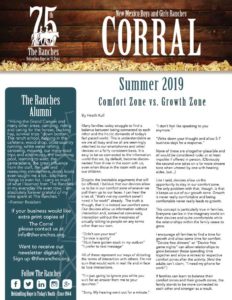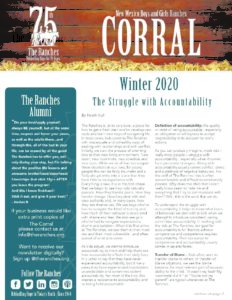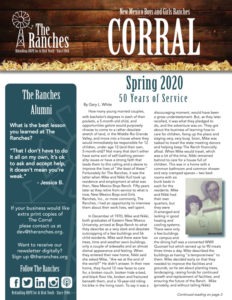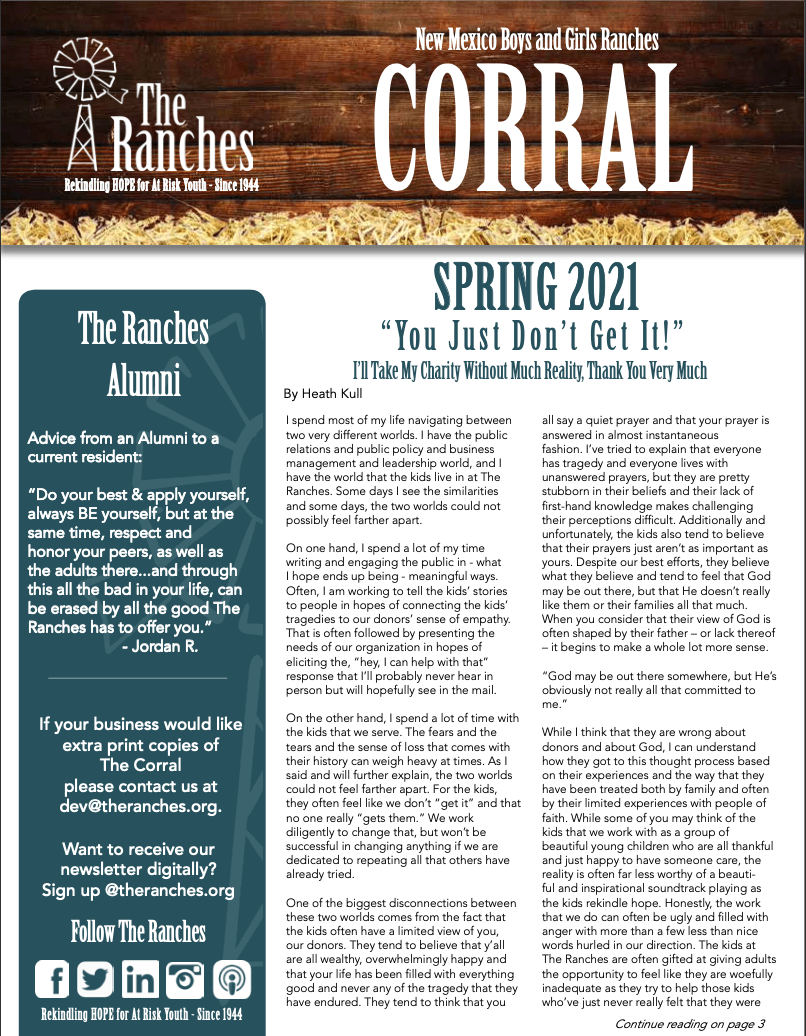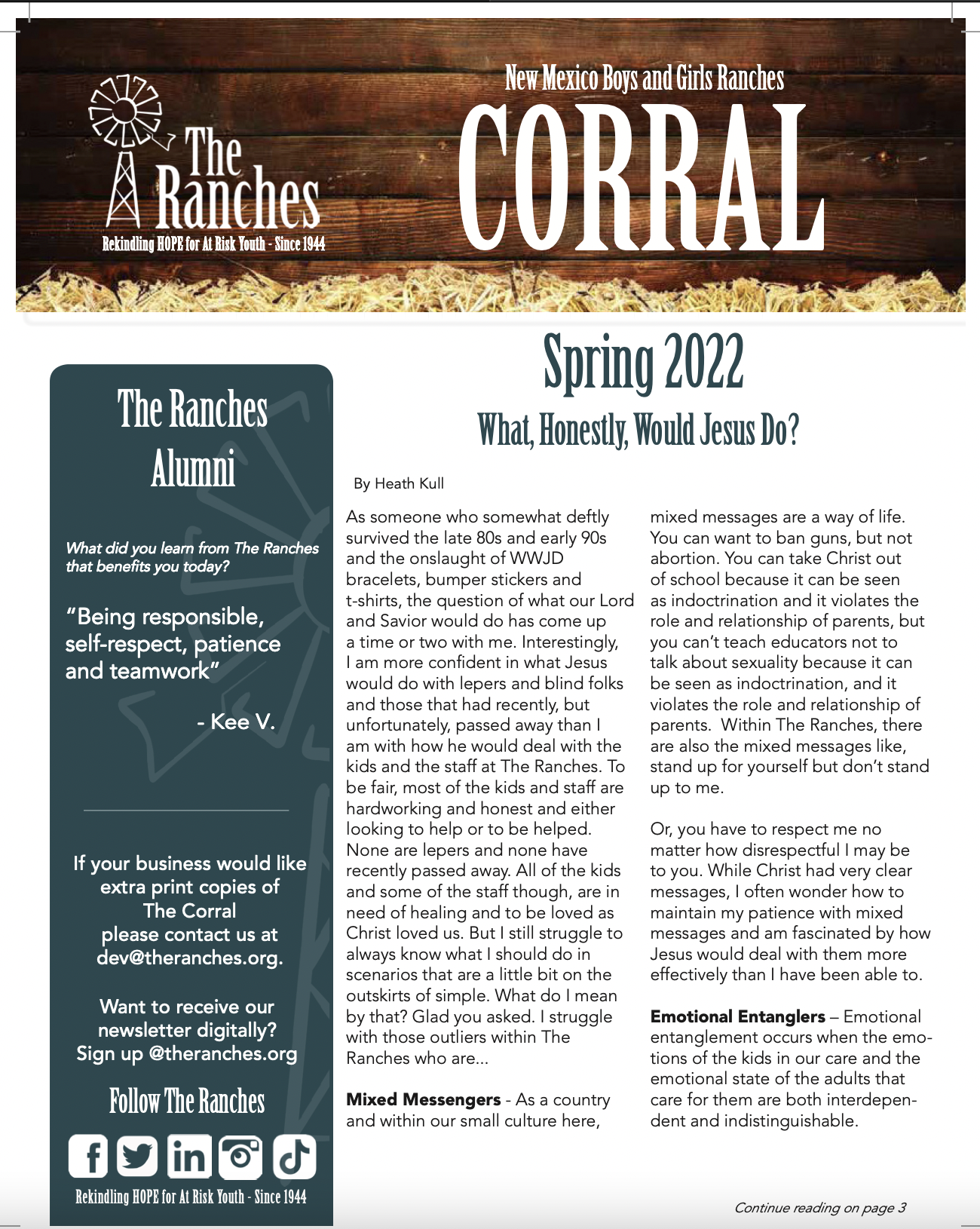Fall Corral 2017
The Fall Corral 2017
“Don’t Be Scared”
By Heath Kull
I often work with and write about hurting
and angry young people since they make
up the majority of the kids at The
Ranches. On any given day, in any coffee
shop in New Mexico, you can hear
people talking about the problem with
young people and how they are all
hurting and angry. While I tend to agree,
it leaves out a very important part of the
equation. Most kids are struggling
because they are actually scared. School,
friends, new teachers, rumors and social
cliques are all very scary to young
people. As adults and as parents, we
sometimes inadvertently send the
message that kids should be fearless
instead of teaching them to be
courageous; and the men of my
generation are the absolute worst at
expecting everyone to be tough,
respectful and fearless.
“Don’t be scared!”
“Suck it up, Buttercup.”
“Man up!”…“Cowboy UP!”
“FEAR is just False Evidence
Appearing Real.”
“Don’t be weak!”
The problem starts to take shape when
kids start to realize that being fearless
has consequences. While all of these
sayings are meant to help kids face the
little things that scare them, they fail to
address the fact that fear is natural and
present in all of us, and that there are
actually things that we should be afraid
of. These sayings also tend to leave kids
with the distinct impression that they are
broken or flawed when they start to be
scared or experience the fear that we all
have had to face. Once the feeling of
being flawed and broken starts to take
hold, the limits for what kids will and
won’t do to manage their fear starts to
disappear. Drugs, sexual encounters,
negative relationships and withdrawal
from society all start to make a lot more
sense and become much more attractive.
“Smoke this. It’ll help and it’s not
addictive.”
“Just trust me. It feels good and I
won’t tell anyone.”
“Just send me a picture.”
“Just sneak out. All the best people
with be there.”
“If you take enough of these, you
won’t feel anything anymore.”
These messages start to replace the
messages from childhood that were
uttered with the best of intentions and
these alternate messages are much more
compatible with the idea that the scared
child is just broken and flawed.
continue page 6

